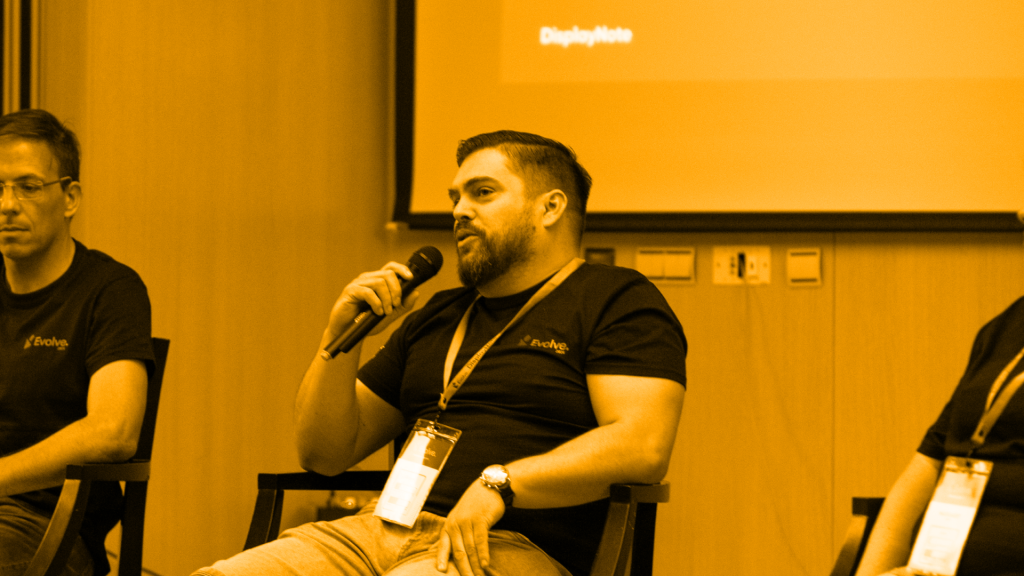
A simple framework for enterprise collaboration.
“The introduction of smarter ways of working together across the extended enterprise enabled by a new breed of innovative concepts and technologies.”
Enterprise Collaboration
This is the definition of Enterprise Collaboration that I currently use when explaining it to other people, and here are three reasons why I find it useful:
- It puts focus on ways of working together, and that we need to find better ways of working that make better use of our individual and collective time and capacity. To do this, we need to reflect more on why and how we use certain tools (a fool with a tool is still a fool).
- It not only stresses that new technologies are core enablers, but also new concepts such as crowdsourcing, collective intelligence, social networking, and cloud computing.
- ‘Across the extended enterprise’ means that the scope is not limited to teams or organizations. A collaborative effort can potentially involve any stakeholder – even customers and consumers – as well as any number of stakeholders.
Let’s put this in contrast to the more traditional view of technology-enabled collaboration (virtual collaboration). Traditional collaboration technologies (a.k.a.groupware) and ways of working focused on team collaboration, e.g. people working together on a common task or goal. The choice of this focus wasn’t as much due to what was possible from a technological point of view, as it was due to the fact that the need for enterprise-wide collaboration wasn’t apparent and imminent at the time when these technologies were introduced.
Business process management addressed the needs for cross-enterprise coordination and communication that existed at that time. R&D, Production, Sales, Marketing and other business functions focused on optimizing the performance of their own activities and the business strategies that were crafted by top management didn’t just set the overall plan but pretty much detailed what each business function should be doing. In a highly dynamic, fast-paced and interconnected business environment, this way of running a business is no longer possible, enterprise collaboration is now the standard.
Tomorrow’s organizations will have to be more like a flock of birds, or shoal of anchovies, that can take new shapes when required. Instead of relying on long-term planning, we have to be prepared for the unexpected. Coordination must happen sideways, in all directions, all the time. Decisions must be made wherever and whenever they need to be made, by people who understand the environment where it is to be executed, while at the same time keeping the shared purpose and big picture in mind.
This cannot be done if we continue to work with our own tasks in business-function silos and blindly follow detailed strategies crafted by top management, dictating the execution without adjusting it to the (changing) environments where the execution is to take place. I see Enterprise Collaboration as an umbrella term for more or less all concepts and technologies that enable smarter ways of working together. One of the concepts that fit under this umbrella is Social Collaboration.
It is a concept that has been adopted by many software vendors in the collaboration technology space lately, IBM, Oracle, OpenText, and NewsGator to mention a few. Social Collaboration is different from traditional or enterprise collaboration in the sense that it stretches and scales far beyond teams. It connects people throughout the extended enterprise to allow them to collaborate on any purpose, big or small. It allows for instant and immediate many-to-many interaction, conversations, sharing and co-creation involving anyone from anywhere within the enterprise. As social collaboration builds upon principles such as openness, participation, and recognition, it helps create the workplace awareness that is required to make decisions locally and still seeing the bigger picture.
The driving force behind social collaboration is the need to remove structural holes in the communication between people, and it does so by helping people to discover each other, connect and build relationships far beyond their teams and business functions. By being able to build new ties and strengthen the weak ties between groups, the likelihood of group-thinking and the sub-optimization that happens when groups optimize for their own goals without seeing the bigger picture decreases. In other words, the negative effects of team collaboration are balanced up.
Although technology is a core enabler for Enterprise Collaboration, there is much more to it. It is often said that three key elements are necessary to build a successful enterprise: People, Business, and Technology. The trick is to achieve the right mixture and balance of these three elements. Some of the most important aspects to address for each element are illustrated below:
The picture above can be seen as a simple, high-level framework for Enterprise Collaboration efforts. People are the engine of any enterprise, and such things as purpose, culture (values, attitudes, behaviors), incentives, skills, and engagement determine how well the engine runs. Business sets the direction, defines what needs to get done, by whom, when and why, and evaluates how we are performing. Technology is the core enabler, providing us with an environment and tools to achieve things together without being limited by geographies and other barriers to communication and coordination.
Interested in finding out ways to collaborate across your enterprise?

You may also be interested in our blog post 13 Words & Wireless Collaboration Increased Marketing Leads by 30%
Want to stay in the loop?
Keep up-to-date with everything DisplayNote – including new releases, job openings, and customer giveaways.
Don’t worry, we’ll not spam you and we’ll never share your email with anyone






